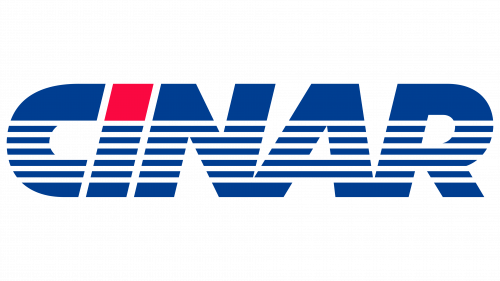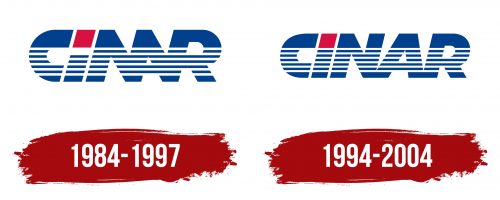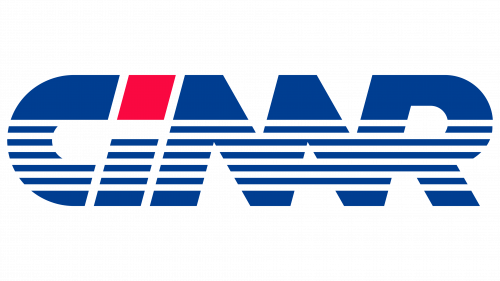The Cinar logo seems to convey the feeling of numerous television waves carrying useful and important information to viewers. Its smooth lines and carefully chosen shades create a sense of dynamism, evoking associations with continuous movement and progress. The emblem reflects a commitment to development, symbolizing constant renewal and improvement in technology and content. This approach highlights the company’s significance in the television world and its contribution to education and entertainment, fostering a sense of growth and forward motion.
Cinar: Brand overview
The history of Cinar began in 1976 when husband-and-wife team Ronald Weinberg and Micheline Charest founded the company in Montreal, Canada. Initially, the business was a small distributor focused on bringing educational European films to North America. The company’s name came from a combination of the Arabic word for “cinema” and “cinéma,” the French term for film.
In its early years, the firm mainly focused on importing and dubbing foreign films and TV shows for the U.S. and Canadian markets. It quickly gained a strong reputation for distributing educational content, which allowed it to grow steadily.
A major turning point came in 1984 when the company began producing its content. Its first significant project was an animated series based on The Wonderful Wizard of Oz. This venture paved the way for future growth and helped establish the company as a major player in children’s entertainment.
Significant growth occurred in the late 1980s and early 1990s. The business produced an increasing number of original shows for kids and teens, including The Busy World of Richard Scarry (1994-1997) and Arthur (1996-present), which became one of the longest-running animated series in television history.
In 1993, the company went public on the Toronto Stock Exchange, allowing it to raise more capital for further production and acquisitions.
One of its biggest milestones came in 1997 with the acquisition of EducAction, an educational software company. This move diversified the company’s business and expanded its presence in the educational technology sector.
By the late 1990s, the company was at the peak of its success, producing numerous international children’s hits, such as Caillou and Zoboomafoo. The business also expanded its publishing branch, releasing books and magazines tied to its TV shows.
However, a major scandal erupted in 1999 when the company was found to have fraudulently claimed Canadian tax credits by falsely attributing writing credits to Canadian screenwriters for work done by Americans.
The fallout was severe. In 2000, both Ronald Weinberg and Micheline Charest were forced to resign. The Toronto Stock Exchange suspended trading the company’s shares, damaging its reputation.
In the following years, new management restored credibility and stabilized finances. Internal investigations were conducted, financial controls were strengthened, and legal issues were resolved.
In 2004, a major shift occurred when a group of investors led by Michael Hirsh, founder of Nelvana, bought the company. It was rebranded as Cookie Jar Entertainment, ushering in a new era.
Under the new name and management, Cookie Jar continued producing children’s content, retaining rights to many successful series created during the company’s peak. The business expanded further by acquiring other companies and content rights.
In 2008, Cookie Jar made a move by acquiring DIC Entertainment, an American company. This acquisition expanded Cookie Jar’s content library and strengthened its position in the global market.
In 2012, another pivotal moment occurred when DHX Media (now WildBrain), a leading Canadian media company, acquired Cookie Jar Entertainment, marking the end of the original company.
Despite changes in ownership, DHX Media continued to produce many popular series originally developed by Cinar and Cookie Jar, including Arthur and Caillou. The content library remains crucial to WildBrain’s portfolio, generating revenue through distribution and licensing deals.
Although Cinar no longer exists as a distinct entity, its influence endures through beloved shows and characters. These series’ continued success and global broadcast are a testament to the company’s content’s high quality and lasting appeal.
Meaning and History
What is Cinar?
This company became well-known for creating and releasing a wide range of animated series that captured the attention of children worldwide. Among the most popular educational series produced by the company are “Arthur” and “Caillou,” which became important elements of children’s programming. These shows stood out for their approach to teaching through entertainment, addressing life lessons and important social topics in a way that was accessible to young audiences. The company also actively collaborated with international partners to provide bilingual content, expanding its influence beyond North America. This approach made its productions popular across different cultures, continuing to combine education with entertainment.
1984 – 1997
The channel’s first emblem consists of a simple yet symbolic name associated with a tree—the plane tree. This majestic, branching plant, which can live up to two thousand years, symbolizes prosperity, longevity, and a large audience reach for the company. The green tree, in turn, emphasized the brand’s family orientation, as the founders were a married couple creating educational programs for the growing generation.
The plane tree is associated with growth, wisdom, and maturity, perfectly reflecting the essence of their work. The lines and stripes crossing the name symbolize television waves, hinting at broadcasting and the transmission of knowledge. The red dot above the letter “i” visually resembles the top of a TV tower, serving as a signal source and information.
Interestingly, the letter “A” is merged with “N,” creating the impression of a double “N,” evoking associations with the well-known CNN channel. The bold font, written in capital letters, conveys a sense of strength and stability, emphasizing the company’s confident position in the industry. The deep blue color of the letters symbolizes trust, creativity, and professionalism, linking the logo to education through technological innovations.
1994 – 2004
CINAR’s logo, updated in 1993 after the company went public, symbolizes its ambition for international expansion and strengthening its position in the European and U.S. markets. The main change in the design was that the letters of the emblem became separated, adding greater readability and individuality to the brand.
An interesting detail is the letter “i,” which received a connection between the glyph and the dot—this enhances the feeling of continuity and stability. The font style combines strictness and dynamism: the letters appear massive and reliable, while the horizontal stripes cutting through them create an effect of movement and progress. This reflects the company’s focus on growth and innovation in its field.
The visual sign’s dominant blue color symbolizes stability, trust, and professionalism—qualities the company sought to establish in the eyes of its clients and partners. The red insert in the letter “i” adds contrast and attention to detail, highlighting CINAR’s focus on innovation and standing out from competitors.
The oval logo’s line design creates a sense of movement and global reach, highlighting the company’s growing ambitions beyond its original market.






